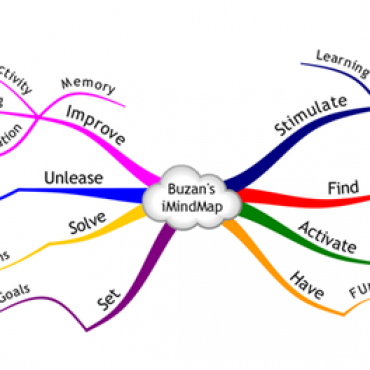Contact Admission
International Collaboration
Ten ancient pain relievers
Ten ancient pain relievers
Before the early 20th century, most patients did not suffer from pain from surgery or tooth extraction. Our ancient ancestors were quite creative in medicine, although we don't know exactly how they got their medical knowledge, they made great use of natural substances to help. The patient relieves or prevents the pain.
10. Opium/
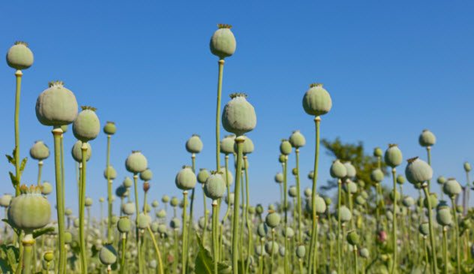
Since about 3400 BC, poppies have been planted in the lower Mesopotamia (Mesopotamia also known as Mesopotamia, a plain between the Tigris and Euphrates rivers of West Asia, today southern Iraq). . The ancient Sumerians referred to poppies as Hul Gil ("the cheerful tree"), exhibiting its arousing and stimulant properties. The knowledge related to the cultivation of poppies and its extracts was highly addictive, passed down from the Sumerians to the Assyrians and to the Egyptians. Around 1300 BC, the ancient Egyptians planted poppies.
The opium trade flourished during the reign of pharaohs Thutmose IV, Akhenaton and Tutankhamen. In 330 BC, King Alexander brought opium to Persians and Indians. Beginning around 1300, opium use was abolished throughout Europe, but by 1527 it was again used as a medicine.
Opium is an anesthetic with great benefits. However, it is also used for other malicious purposes: entertainment, drug trafficking and other forms of illegal businesses. Until now, whether we use opium for good or bad, it all depends on how we use it.
9. Henbane / Lava tree
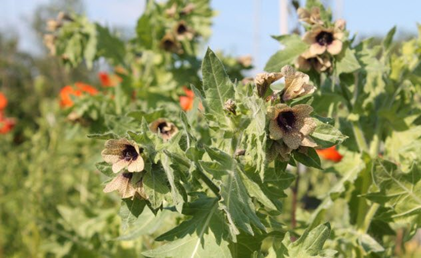
Like a number of other flowers and herbs used for medicinal purposes, the Hyoscyamus niger (Thien Tien Tu tree) is known as a henbane (the lava tree) that can affect psychosis. This plant has been used as an anesthetic since ancient times. Like other Hyoscyamus species, henbane contains atropine (which is found in herbs used as muscle relaxants) and scopolamine (alkaloids used to prevent vomiting, soothe the body or help sleep well). Henbane has been shown to provide pain relief in the first century since the birth of Jesus.
In ancient Turkey, henbane was called beng or benc. As pills or smoked, it helps to relieve toothache, ear pain, and other ailments. Henbane is also a remedy for toothache, sore throat. After the patient rinsed his mouth with warm water, henbane seeds, particularly rich in atropine and scopolamine, were sprinkled over hot coals. Smoke enters the mouth, relieves toothache.
8. Acupuncture / Acupuncture
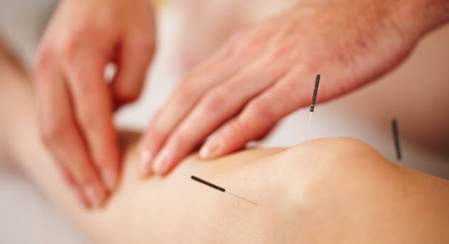
Around 100 BC, "Ancient Royal Medicine" was the first document on acupuncture to be launched as "an organized diagnostic and treatment system". This ancient medical document is based on centuries-old traditions associated with Taoist philosophy. It deals with the life force channels (meridians), an important concept for the treatment of various disease symptoms, by inserting needles into the exact locations involved in these life force channels.
In fact, acupuncture fell to disgrace in the 17th century and banned in 1929. It got more attention in 1949 and was considered one of the therapeutic options besides medicine. Although the effectiveness of acupuncture is little supported by clinical studies in the treatment of pain or other conditions, it has spread to both Japan, across Europe and the United States.
In theory, a series of needles are inserted into hundreds of points throughout the body, to balance the flow of yin and yang through the body's meridians. Acupuncture critics argue that acupuncture's effectiveness as anesthetic, and as an agent for treating other cases, is mainly due to placebo symptoms. However, it is possible that some acupuncture points are "points that trigger a physiological response in the body".
7. Mandragora / Potato tree
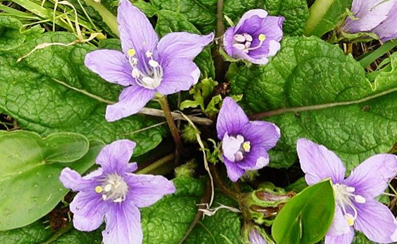
One of the first anesthetics was Mandragora. The Greek doctor Dioscorides (40-90 years since Jesus' birth) wrote this anesthesia case in the first century when talking about Mandragora. Mandragora wine is made from the mandrake tree (a poisonous yellow fruit tree), which induces a deep sleep that helps patients through surgery. Dr Dioscorides describes the sleep caused by Mandragora as "anesthesia".
In the 13th century Italy, surgeon Ugo Borgognoni (aka Hugh of Lucca) introduced the use of "sponge" to induce sleep. "A sponge is soaked in a dissolved solution of opium, mandragora, fruit juice and other substances that have been previously dried and preserved." After getting wet, the sponge is held over the patient's nose until the sponge gas makes the patient lose consciousness.
6. Datura / Datura plant
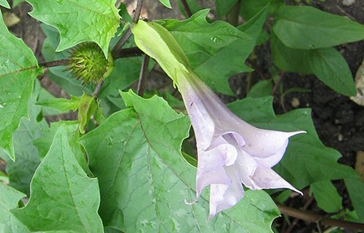
Although the Datura plant (also known as Thorn apple or Jimsonweed) is derived from plants that contain toxins, it has been a popular pain reliever and sleep aid since ancient times. It has been mentioned in the ancient medical literature as Dioscorides (40-90 AD), Theophrastus (370-285 BC), Celsus (37 AD) and Pliny the Elder (23-79 AD).
Datura still has some serious side effects. For example: 3,411g Drachma drug taken with alcohol can cause hallucinations, if doubled dose may go crazy in 3 days. Larger doses could cause insanity or even death. Although Datura has been helping patients with pain relief during surgery since ancient times, it can also lead to death if not used properly. For this reason, Datura has been given another popular name "Devil's Apple".
5. Ethylene
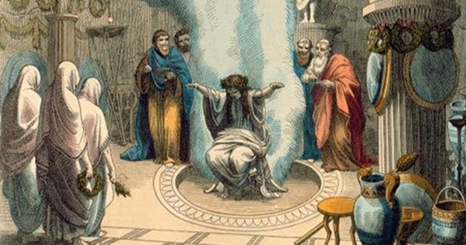
At Delphi Square in Greece, the prophet Pythian, worshiping the god Apollo, uttered a prophecy after inhaling gases from the crack at the foot of the temple of the sun god. This gas is ethylene - a gaseous anesthetic. In 1930, ethylene was hailed as the next generation of general anesthetic. It replaces chloroform (chloroform is the sudden danger of death), and ether (ether is prone to post-operative nausea and vomiting). According to the surgeon, who has used ethylene in 800 surgeries, ethylene has left the patient unconscious for "3 to 8 minutes ... but without excitement or suffocation." The effect of ethylene was also very rapid after the anesthetic mask was removed.
The use of ethylene also has many other benefits. Since ethylene is "less toxic to the nervous system or body cells", it also does not give rise to headaches, does not irritate the lungs, has no adverse effects on blood pressure, or does not cause excessive bleeding or sweating after surgery. Ethylene also produces less acid (acid tissue or body fluids) and rarely develops pain caused by ethylene itself. However, ethylene still has some disadvantages such as an unpleasant odor. More dangerous, it can cause an explosion, so it has been forbidden to be used with hot tools such as the presence of flames and surgery in the X-ray room, but ethylene can be used for any surgical procedure. other techniques. The prophet Pythian worshiping the god Apollo agreed to the surgeon's assessment of ethylene - this gas anesthetic.
4. Cannabis
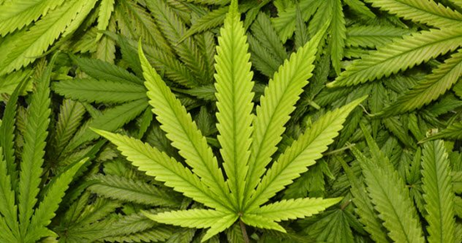
In 2900 BC, Chinese Emperor Fu observed that cannabis was a pain reliever. The herb plant is one of the Chinese medicinal species from the 15th century BC, essentially the cannabis as an encyclopedia of drugs. The use of cannabis for pain relief has spread from China to other parts of the world.
Around 1000 BC, the Indians started mixing marijuana with milk to create a pain reliever called Bhang. Next, the cannabis was used to help relieve ear pain, swelling, and inflammation. In AD 200, Hua To - a Chinese doctor prepared to anesthetize patients by mixing marijuana with sap and wine, making surgery for the abdomen, lumbar and chest almost painless. In AD 800, Arab doctors used cannabis to help patients with migraine relief.
3.Chienong lake books
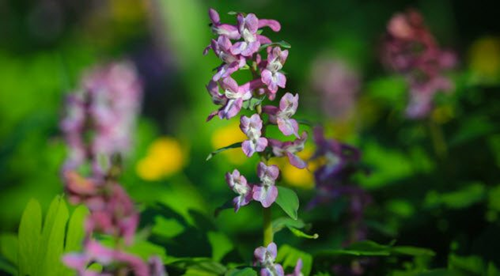
According to traditional Chinese medicine, the Corydalis plants and tubers are boiled in vinegar, used to relieve headaches and back pain. As a member of the poppy family, the Corydalis tree grows mainly in central China.
According to modern scientists, Corydalis is an effective pain reliever because it contains dehydrocorybulbine (DHCB), a natural analgesic compound. "This drug has been back for thousands of years, and it still has its effects intact," said Olivier Civelli, a pharmacist at UC Irvine University, California in the US.
According to Chinese traditional medicine doctors, Corydalis tree has analgesic effects because it improves vitality. According to modern research, DHCB has an activation mechanism like morphine. However, DHCB acts on the dopamine-binding receptor rather than the morphine receptor. Also, unlike morphine, DHCB is not addictive. A plant that has been used for centuries in China could offer new ways to relieve pain in modern patients. Scientists believe that DHCB produced from Corydalis tubers could become a pain reliever in the future.
2. Compression of the carotid artery
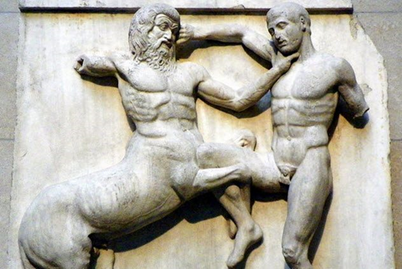
One of the ways to relieve pain is to make the patient unconscious. Ancient doctors sometimes squeezed the carotid arteries in a patient's neck to decrease or shut off blood flow from the heart to the brain.
Aristotle wrote about the effect of compression of the carotid unconsciousness: "If these blood vessels are squeezed outside the male's neck, even though not actually suffocated, the man will become emotionless and fell to the ground ". Ephesus' Rufus (AD 100) claims that the cervical arteries are also called carotid arteries because they pressurize them to induce sleep.
A sculpture in the southern Parthenon in Athens shows a cavalry warrior compressing the left carotid artery of a Lapith warrior. This also indicates that the ancient Greeks were aware of the effectiveness of this technique in making an individual unconscious. Use in war is also sometimes used in medicine.
1. Willow bark
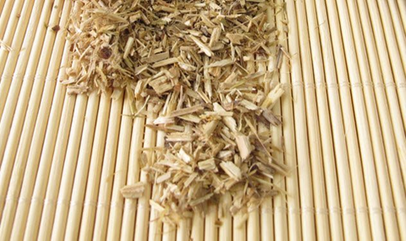
For centuries, willow bark has been used by humans as an anti-inflammatory and analgesic remedy. In particular, the white willow trees growing along the banks of the Nile are an endless supply of medicinal herbs for humans.
Ebers Papyrus, a collection of literature from 1500 BC, describes the use of willow bark as a pain reliever. The ancient Chinese and Greeks also used willow bark for this purpose. Surgeon Dioscorides notes the powerful effects of this medicinal herb in pain relief. Modern studies show that willow bark is an effective pain reliever because it contains salicin, "an aspirin-like substance". Studies also show that, even in low doses, willow bark is more effective at reducing pain than aspirin. Due to its effectiveness, this centuries-old remedy is still used to relieve pain from headaches, back pain, and osteoarthritis.
Source: http://listverse.com/2017/09/10/top-10-ancient-pain-relievers/
Translation: Dr.Nguyen Huu Tung & partner
Other healthcare
- Development history of world medicine ( 11:44 - 13/10/2017 )
- Microfluidic channel device for tumor chemotherapy ( 11:40 - 12/10/2017 )
- Higher education in the era of Industrial Revolution 4.0 ( 11:37 - 08/11/2017 )
- DRG Nerve Stimulant Device ( 11:19 - 09/10/2017 )
- Surgeons view CT, MRI, ultrasound images using 3D technology ( 11:14 - 07/10/2017 )
- Steps to make mind map (Mind map) ( 11:00 - 07/10/2017 )
- Mind mapping software ( 10:41 - 07/10/2017 )
- Mind map is what? ( 10:28 - 18/10/2017 )
- Schizophrenia is 80% hereditary ( 10:21 - 05/10/2017 )
- Device pain relief ( 15:14 - 06/10/2017 )








